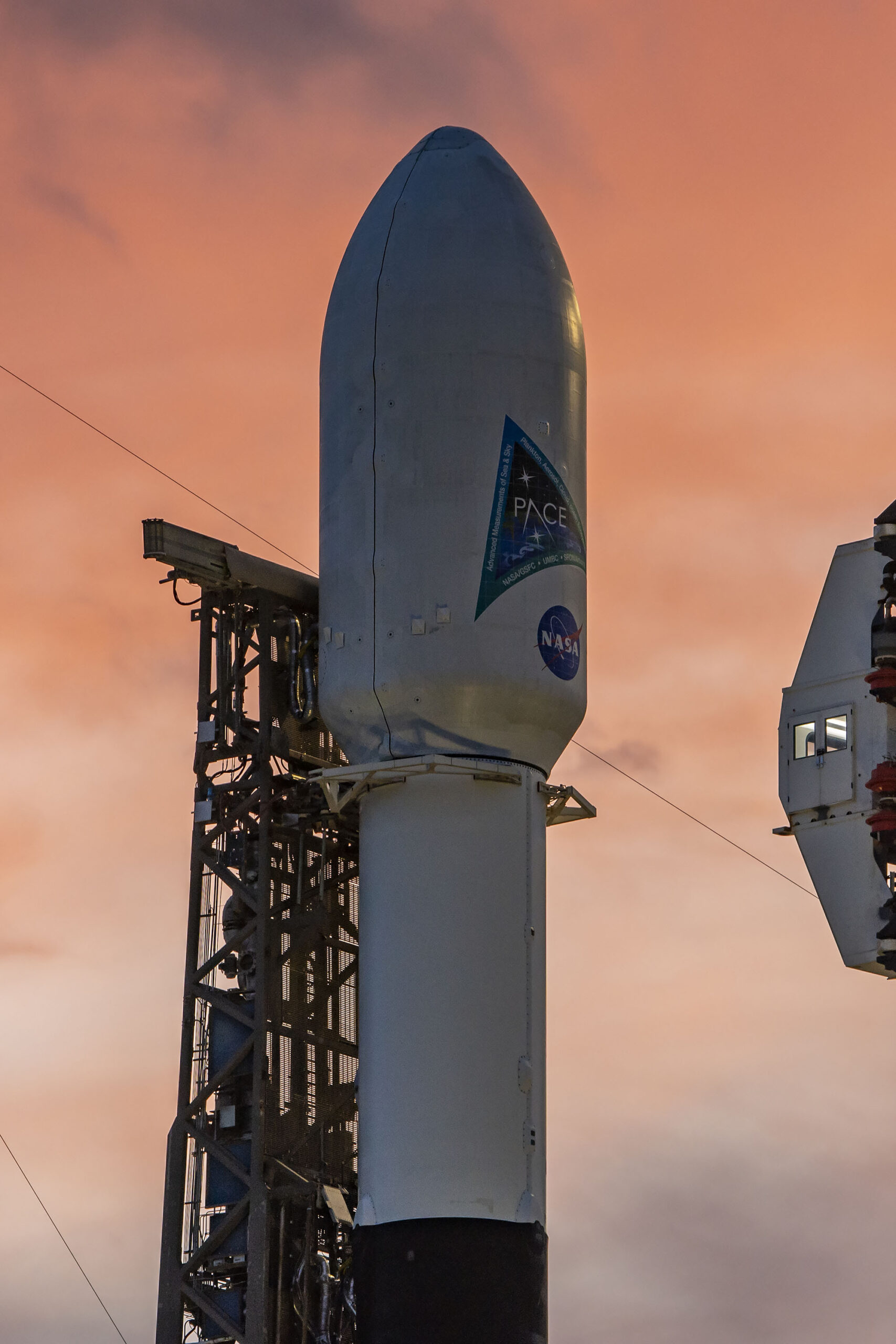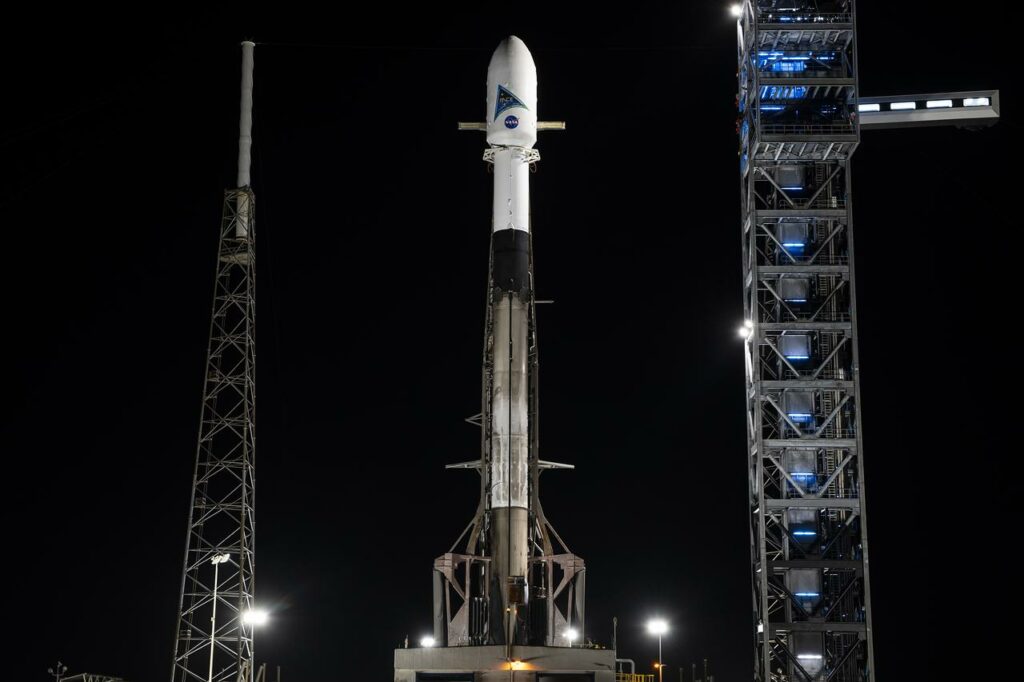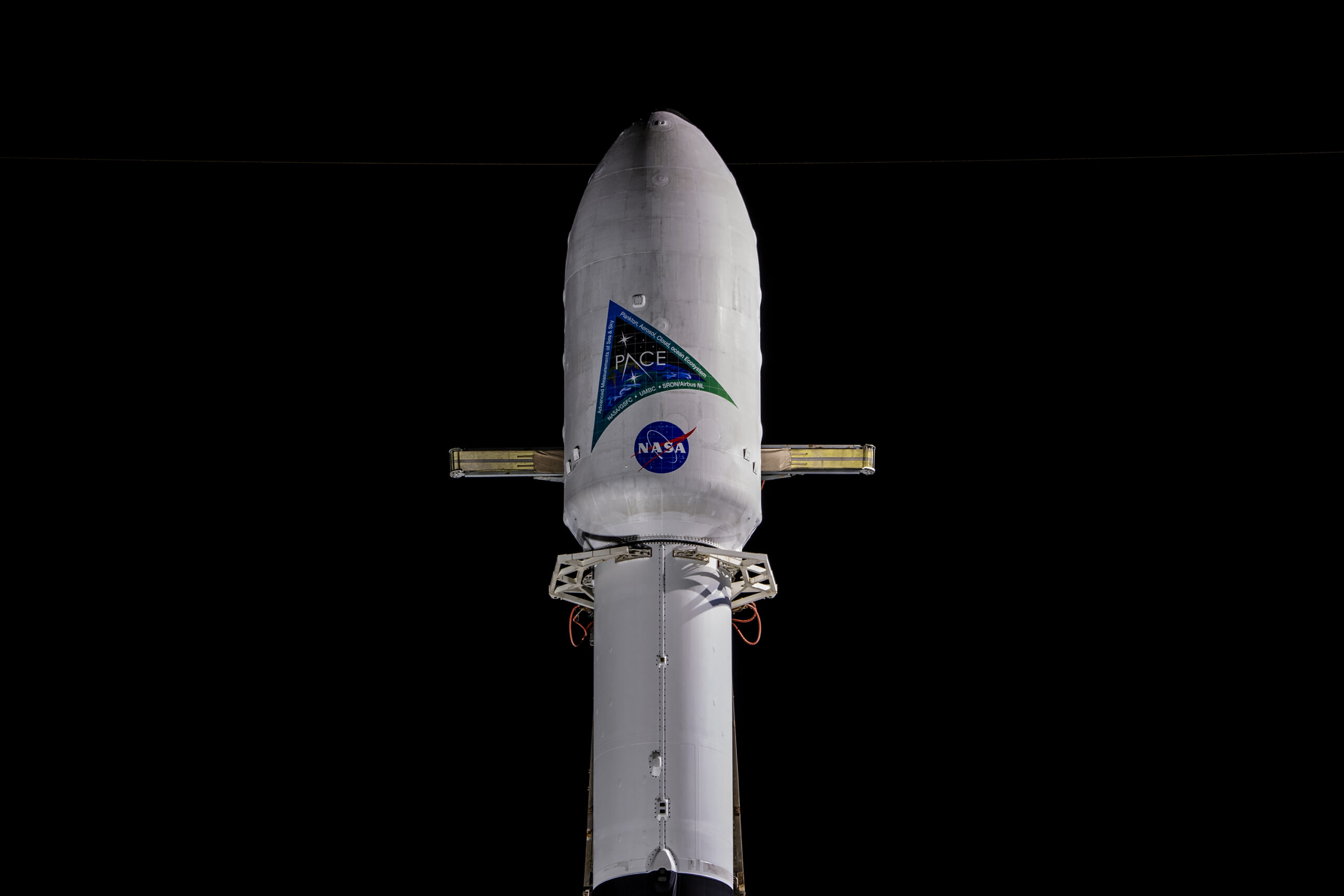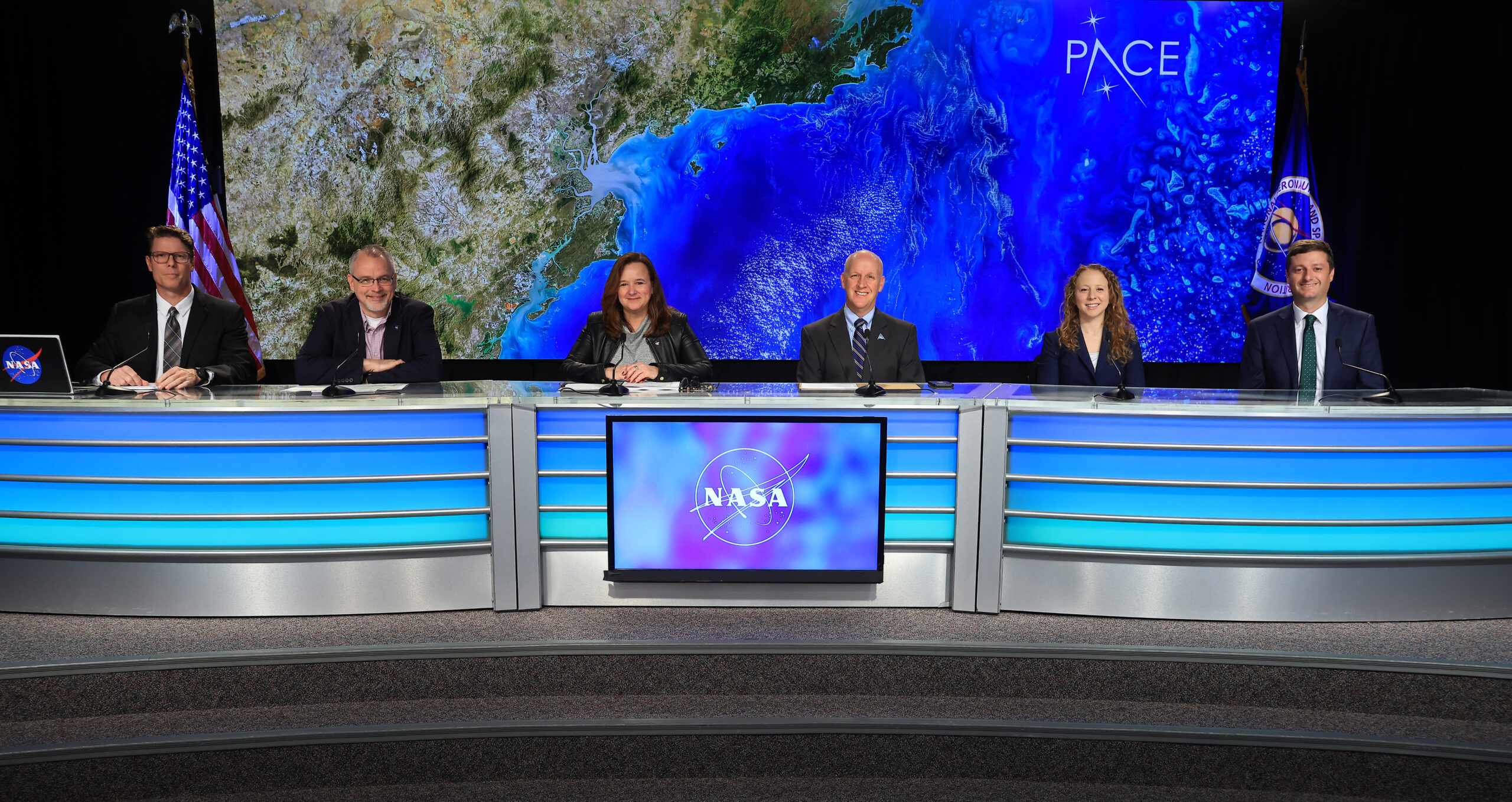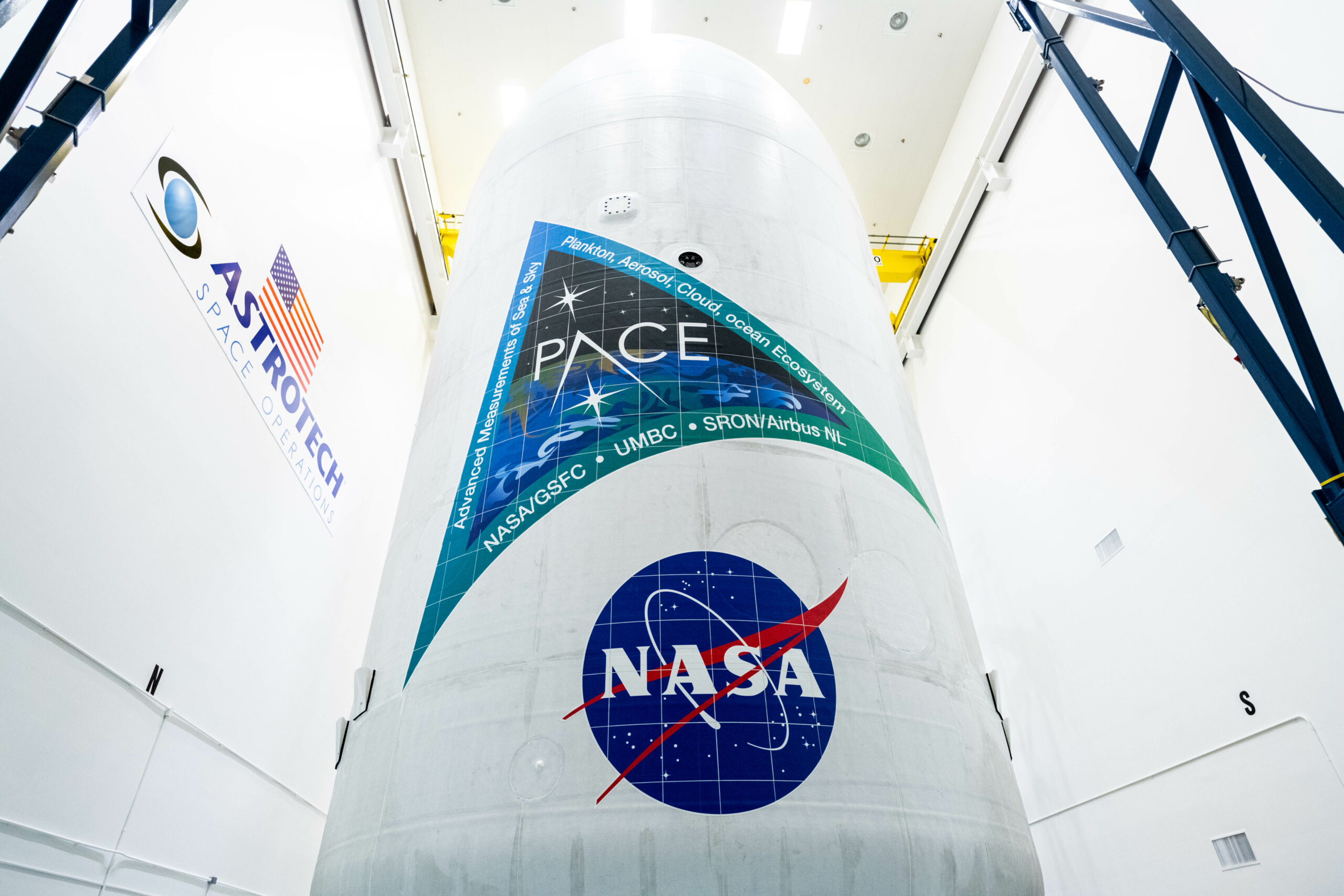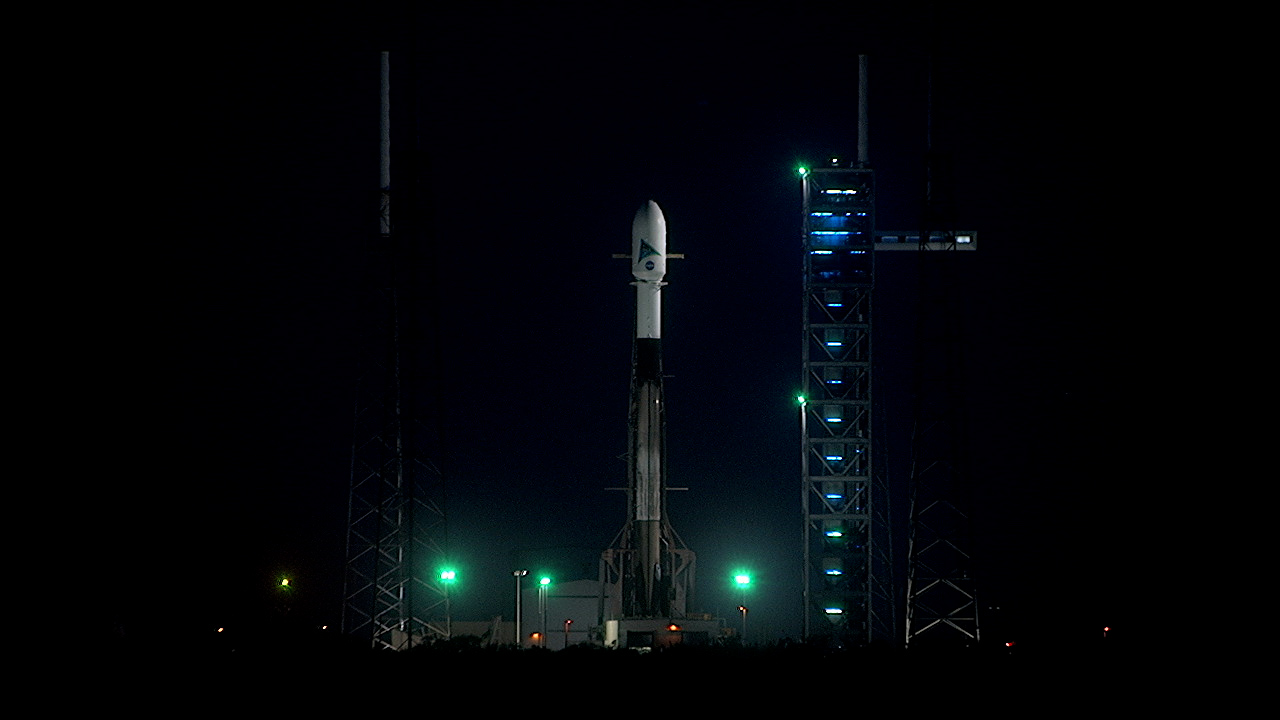
Good evening and welcome to this morning’s live launch blog coverage of NASA’s PACE (Plankton, Aerosol, Cloud, ocean Ecosystem) mission launch from Florida.
NASA and SpaceX teams are currently counting down to liftoff of a SpaceX Falcon 9 rocket carrying the PACE spacecraft from Space Launch Complex 40 at Cape Canaveral Space Force Station. Liftoff is scheduled for 1:33 a.m. EST.
Tonight’s coverage comes to you from the NASA News Center at the agency’s Kennedy Space Center. Follow along right here on the blog as we take you through the entire flight profile for the PACE mission.
You can also watch the launch broadcast on NASA Television NASA+, the NASA app, and the agency’s website, as well as YouTube, X, Facebook, Twitch, and Daily Motion.
Join the conversation, follow the launch, and get PACE mission updates from these accounts:
X: @NASA, @NASA_LSP, @NASAEarth, @NASAKennedy, @NASAGoddard
Facebook: NASA, NASA’s Launch Services Program, @NASAEarth, NASA’s Kennedy Space Center, NASA’s Goddard Space Flight Center
Instagram: @NASA, @NASAKennedy, @NASAGoddard


